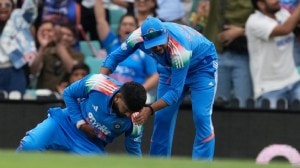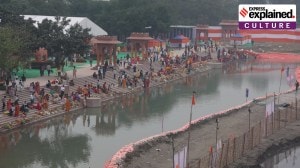Women in the House
At least one argument that the male political establishment has consistently advanced to keep women out of mainstream politics took a severe...

At least one argument that the male political establishment has consistently advanced to keep women out of mainstream politics took a severe beating in the recent elections. For lack of better terminology, let’s call it the winnability factor. Figures show that despite fewer women hitting the campaign trail this time — 267 as against 599 last time — they performed marginally better, increasing their representation in the 12th Lok Sabha to 41 from 39 in 1996. What’s more, while only 1 in 11 men were successful, in the case of women, 1 in 6 made it to the House. But a closer look at the available data reveals that even the conspicuous success of women candidates does not mean that they will be taken any more seriously in the future, than they were in the past.
Of the political parties in this general election, the BJP women candidates notched a 50 per cent success rate, with 15 of the 30 women fielded becoming MPs, in contrast to the Congress’ record of 10 out of 39 and the Janata Dal’s of none out of 11.But there were reasons for the BJP’s women candidates doing so well and they have nothing to do with any initiative taken by the party high command to redress the gender imbalance in ticket distribution and party support. Many among the party’s successful women candidates, like Rita Verma from Dhanbad, Sumitra Mahajan from Indore, Uma Bharati from Khajuraho and Vijayaraje Scindia from Guna, have won from their constituencies three and four times consecutively. In the case of Scindia, for instance, although ill-health prevented her from campaigning personally this time, she still won by a handsome margin of over a lakh votes. In other words, these women were fielded by their party because they were proven winners. After all, it should not be forgotten that the BJP too had its fair share of male MPs who fought long and ferociously against the passage of the unfortunate women’s reservation Bill in the last Lok Sabha.
For women in politics, the more things change, the more they remain the same. Take theirperformance in the four southern states. In Karnataka, although there has been women’s reservations at the panchayat and municipal levels for the last 10 years with women constituting about half the representation, not a single woman MP emerged from the state. In Kerala, which has been rightly lauded for its high female literacy levels and favourable sex ratio, only one woman — CPM’s A.K. Premejam from the Vadakara constituency — came through. Tamil Nadu, with its 39 constituencies, saw only V. Saroja of the AIADMK win. Andhra Pradesh, with 42 constituencies, fared only marginally better. Only two women, P. Lakshmi of Nellore, and S. Suguna Kumari of the TDP, were successful. The results also reveal the usual sprinkling of wives who were victorious only because of the clout, often dubious, of their husbands. RJD’s Rama Devi, who won the Motihari seat in Bihar, is a prime example. Her husband, until Monday a Bihar minister, is now charged with the murder of his wife’s political opponent. In cases such asthis, the transformative potential of women emerging on the political arena is lost. They become an extension of the existing politics of power and little else.



- 01
- 02
- 03
- 04
- 05




























